The Top Sodium-Rich Foods You Need to Know About

Did you know? Most of the sodium in our diet comes from processed and packaged foods, not from the salt shaker. (Source: American Heart Association)
Sodium is an essential mineral that is crucial in maintaining various bodily functions. However, too much sodium can adversely affect your health, causing high blood pressure, heart disease, and stroke. Therefore, it's crucial to maintain a balanced sodium intake in your diet. This article will discuss the top sodium-rich foods you need to know about.
Key Takeaways
- Sodium is an essential mineral that is vital in maintaining various bodily functions.
- Too much sodium, such as high blood pressure, heart disease, and stroke, can adversely affect your health.
- Knowing the top sodium-rich foods can help you make healthier choices and reduce sodium intake.
- Tips to reduce your sodium intake include reading food labels, using herbs and spices, limiting your intake of processed foods, cooking your meals from scratch, and rinsing canned foods before using them.
What is Sodium?
Sodium is a mineral that is essential for various bodily functions, such as maintaining fluid balance, transmitting nerve impulses, and regulating blood pressure. It is commonly found in salt and added to processed foods to enhance flavor and preserve them.
Did you know? Sodium is not just essential for humans; it's also necessary for the survival of many animals, such as marine mammals, who need it to maintain their fluid balance. (source: University of Hawaii)
The Importance of Sodium in Your Diet
While consuming too much sodium can adversely affect your health, it is still essential to maintain a balanced intake of sodium in your diet. Sodium is vital for maintaining fluid balance in your body and transmitting nerve impulses. It also plays a crucial role in regulating blood pressure.
Recommended Sodium Intake
According to the American Heart Association, an adult's recommended daily sodium intake is 2,300 mg or less. However, for individuals with high blood pressure, African Americans, and middle-aged and older adults, the recommended intake is 1,500 mg or less.
The Effects of High Sodium Intake
Consuming too much sodium can lead to various health issues, such as high blood pressure, heart disease, and stroke. It can also cause your body to retain water, leading to bloating and swelling.
The Top Sodium-Rich Foods
Processed Foods:
Processed foods are one of the most significant sources of high sodium intake in modern diets. These include canned soups, chips, pretzels, deli meats, and frozen dinners. Processed foods often have added salt, preservatives, and flavorings that can increase the sodium content. A diet high in processed foods has been linked to a higher risk of cardiovascular disease, high blood pressure, and stroke.
Bread and Rolls:
Bread and rolls are also high in sodium, with just one slice of bread containing up to 230 milligrams of sodium. This is because bread is often made with added salt, and some types of bread and rolls may also contain other sodium-rich ingredients like cheese or meat. Eating too much sodium from bread and rolls can increase blood pressure and put a strain on the heart.
Pizza:
Pizza is a popular food that is often high in sodium. One slice of pizza can contain up to 760 milligrams of sodium. The high sodium content in pizza is due to the use of processed meats, cheese, and high sodium sauces. Eating too much pizza can increase blood pressure and put a strain on the heart.
Cheese:
Cheese is another food that is high in sodium. One ounce of cheddar cheese contains around 180 milligrams of sodium. This is because cheese is often made with added salt, and some types of cheese can be especially high in sodium. Eating too much cheese can increase blood pressure and put a strain on the heart.
Condiments:
Condiments such as ketchup, soy sauce, and barbecue sauce are often high in sodium. Just one tablespoon of soy sauce contains up to 900 milligrams of sodium. Condiments are often used in small amounts, but their high sodium content can add up quickly if they are used frequently. Choosing lower-sodium versions of condiments or using them sparingly can help reduce sodium intake.
Cured Meats:
Cured meats such as bacon, ham, and sausage are also high in sodium. One slice of bacon can contain up to 190 milligrams of sodium. Cured meats are preserved with salt, which can increase their sodium content. Eating too much cured meat can increase blood pressure and put a strain on the heart.
Pickled Foods:
Pickled foods such as pickles and olives are high in sodium due to the brine they are preserved in. While pickled foods can be a healthy addition to a diet in small amounts, eating too many can increase sodium intake and strain the heart.
Seafood:
Seafood is naturally high in sodium, with some types of fish containing over 1000 milligrams of sodium per serving. While seafood is a healthy addition to a diet, it is important to be aware of its sodium content. Choosing lower-sodium types of seafood or using less salt when cooking can help reduce sodium intake.
Salted Snacks:
Salted snacks such as popcorn and pretzels are high in sodium due to the salt used to season them. These snacks can be a healthy addition to a diet in small amounts, but eating too many salted snacks can increase sodium intake and put a strain on the heart.
Soups:
Soups, especially canned soups, are often high in sodium. One cup of canned chicken noodle soup can contain up to 800 milligrams of sodium. This is because soups are often made with added salt and other sodium-rich ingredients like canned vegetables and meats. Choosing lower-sodium versions of soups or making homemade soups can help reduce sodium intake.
How to Reduce Your Sodium Intake:
Reducing your sodium intake can have significant health benefits, such as lowering your blood pressure and reducing your risk of heart disease and stroke. Here are some tips to reduce your sodium intake:
- Read food labels and choose low-sodium or sodium-free options.
- Use herbs and spices instead of salt to add flavor to your meals.
- Limit your intake of processed and packaged foods.
- Cook your meals from scratch using fresh ingredients.
- Rinse canned foods before using them to remove excess sodium.
Conclusion
Sodium is an essential mineral that is vital in maintaining various bodily functions. However, too much sodium can adversely affect your health, causing high blood pressure, heart disease, and stroke. Maintaining a balanced sodium intake in your diet is crucial, and knowing the top sodium-rich foods can help you make healthier food choices.
FAQs
What is the recommended daily intake of sodium?
The recommended daily sodium intake for an adult is 2,300 mg or less.
What are the health risks of consuming too much sodium?
Consuming too much sodium can lead to various health issues, such as high blood pressure, heart disease, and stroke.
What are some tips to reduce your sodium intake?
Read food labels, use herbs and spices, limit your intake of processed foods, cook your meals from scratch, and rinse canned foods before using them.
Are there any low-sodium or sodium-free options for common sodium-rich foods?
There are low-sodium or sodium-free options for salt, canned vegetables, and cottage cheese.
Can reducing your sodium intake have health benefits?
Yes, reducing your sodium intake can have significant health benefits, such as lowering your blood pressure and heart disease and stroke risk.

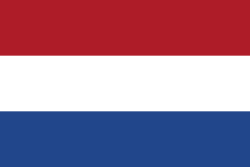
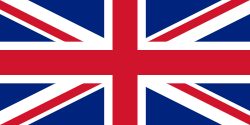
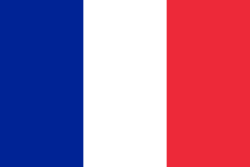
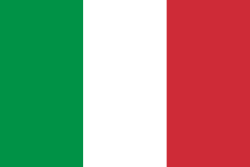
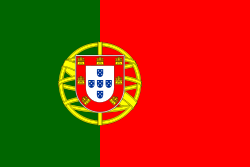
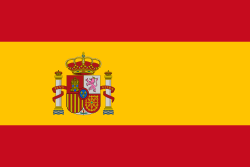
![[ELXPC] Endurolytes Extreme Powder](/web/image/product.product/1036/image_256)
![[FBB1] Hammer Vegan Energy Bar (Cranberry, 1 Serving)](/web/image/product.product/1269/image_256)